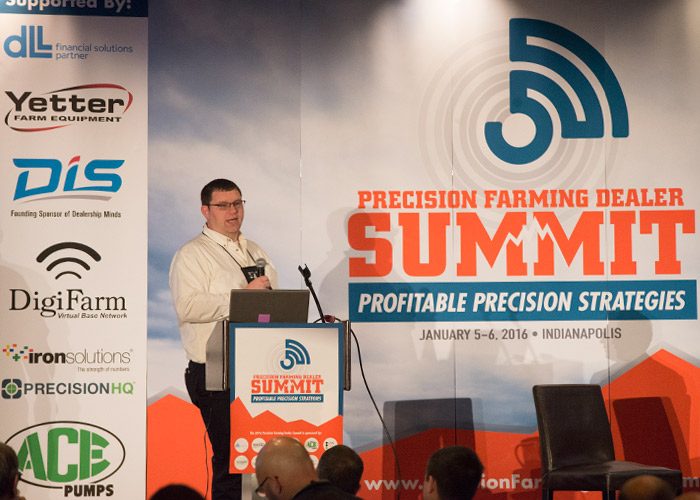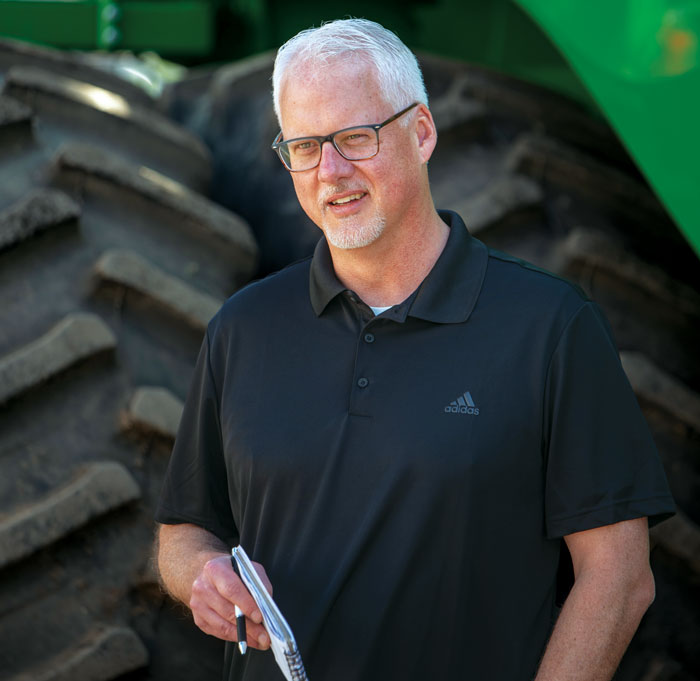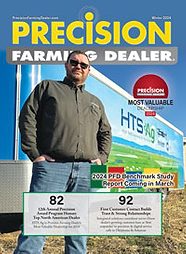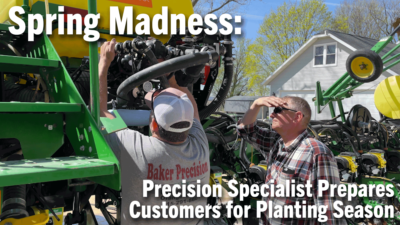Online Extras
• Johnson Tractor’s Advice on Precision Service Plans• Billable Service
• Internal Management Challenges Still to Solve for Sustainable Precision Farming Service Plans
After years of “giving unapplied service labor away for free when it came to precision technologies” the dealer panel presentation on capturing revenue in service plans for precision was of keen interest for Summit attendees.
There’s plenty of reasons they make sense for the time- and technology-pressed farmer and the dealer, and the prevalence of pre-harvest and pre-plant inspections have blazed the trail. The farmer gets piece of mind (and uptime) from preventive maintenance, knowledge that his phone calls will be fielded. He’ll also know that he’ll get toward the top of the list during code-red situations, along with a greater expectation for the expert service that he’s paying extra for.
The dealer, meanwhile, can even out the workload of the precision farming specialists (the least envied position in the dealership), reduce in-season emergencies and create a recurring revenue stream to keep a dealer in business. “And your customers want and need you to stay in business,” says Adam Gittins, GM of HTS Ag, an independent precision ag dealership in Harlan, Iowa.
Johnson Tractor’s Jason Pennycook was given a directive from the top that precision farming sales and support would not be treated as just a necessary evil or more overhead in the dealership; it would be a revenue-producer. “Plus, with the service plans, you’re out there talking to the customer, getting more one-on-one time. The more that happens, the better relationship you’ll build and the more they’ll want to come to you to work on their equipment,” he says.
Pennycook believes the current farm economy will bring more service plan participants. “When commodity prices were high, farmers who rolled equipment every year or two didn’t see the value in service plans. Now that they’re holding on to equipment, they’re going to start to see service issues eventually.” Pennycook says once a dealer arrives at the right program, the customer take rate will improve over time.
Precision Service Plans: What to Offer?
Starting with 4 customers in 2007, HTS Ag is entering its ninth year of selling service plans. The possibilities of what can be included in a plan are limitless, Gittins says, stressing the maxim of “Keep it simple stupid!” He advises starting with an annual menu of services already offered: firmware updates, training, phone support, etc. “All can be rolled into service plans that provide priority access in-season. That’s one of the biggest things, when our customers need help, if they know they have a service plan, they know they’ll get special treatment. They’re going to be able to get a hold of us quicker and easier than if they don’t have a service plan.”
Mistakes Made Getting Started in Service Plans
When HTS got started, their plan was simple: $400 for one onsite visit and $600 for two. While it didn’t attract many customers (less than 10 initially), HTS sold enough to sense trouble servicing all the customers. “And once we got a little farther down the path, we weren’t actually bringing priority treatment to those with service plans because nearly everyone had one.”
Their second attempt increased the plan costs to $450 and $650, but HTS added a phone support-only option for $300. “It was a no brainer for them to spend the extra $150 to have us come out and look everything over and run through our checklist. That extra $150 to be onsite made it easy to sell but we had the same problems. We were offering an ‘all you can eat buffet’ and guys were taking advantage of the amount of time that we would spend with them.”
The third attempt was a bunch of different options and choices, including a remote support package, with a separate charge for each display and options to make their maps. “It was too complex and hard to manage. And for the farmers that had six or more displays, we priced ourselves out of the market.”
Pricing services by the farm didn’t work either, because there wasn’t enough meat on the bone with farmers who had multiple displays, he says. Repairs were another issue. “You’ve got to make sure they understand that this is a pre-season inspection and doesn’t include tearing something out of one tractor and installing it in another or rebuilding a wiring harness or whatever else may need to be done. It’s easy for your techs to do too much, to say, ‘I’ll just take care of all of it for that price for you.’ That mentality will cause you a lot of grief over time.”
Results: Less is More
In its second iteration of the plan, HTS had 200 plans sold for 2013. “With 200 plans, it was really hard to tell a customer that he was unique. So that’s when we introduced the more complex, thoroughly laid out plan. That brought us down to 120 plans and then last year we had about 100 plans.”
 |
 |
|
HTS Ag is seeing significantly more revenue per plan with fewer participants and providing better service. |
While the charts at right would indicate customers were leaving, he says 100 was a much more manageable level for the staff, and delivered that special treatment that farmers in the plan expected.
And while 2014 brought a big spike in total dollars generated followed by a similar drop in 2015, the important thing is to look at average dollars per plan. “Even with reducing the complexity, we were able to see more dollars per plan because the guys were opting into higher plans.”
Today, the current plan includes phone and remote support as well as one and two onsite visits per year, but with different pricing depending on whether multiple displays are involved.
HTS charges $100 per hour for service plan customers and $125 per hour for those without. Through analysis that includes logging a ticket and tracking time against phone support, Gittins calculated the average billable rate for service plans comes to $277.54 per hour. “So you can get to a really profitable spot providing some really great service for your customer that they’re very happy to pay for because they realize they’re getting preferential treatment.”
What he’s most proud of, he says, is the impact of the renewals. “When Jan. 1 rolls around and we renew all our service plans, we have the annual salaries covered for two full-time technicians in the first month of the year.”
 |
|
Both Adam Gittins and Jason Pennycook say it’s impossible to do too much promotion of the program and the various services that are offered. Mailers and postcards, one-on-one conversations, presentations and placing it on to each and every quote generated are advised. “When we show the total, talk through it and explain the deliverable of that service plan, we had an incredible adoption rate,” Gittins says. To see the details included in each dealership’s plan, click here. |
Learn More
-
33 Tips for Turning Billable Service Into Recurring Precision Revenue
Providing reliable service is a source of pride for dealers, but recouping a reasonable return on their time remains a challenge.








Post a comment
Report Abusive Comment